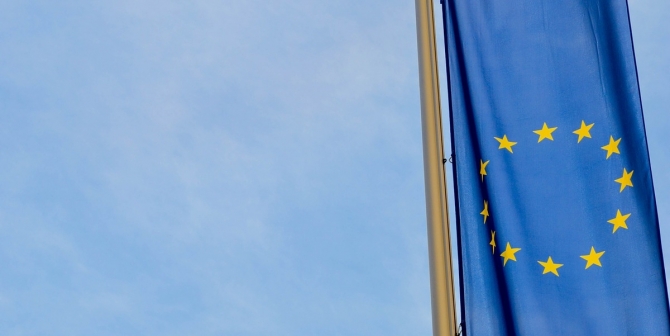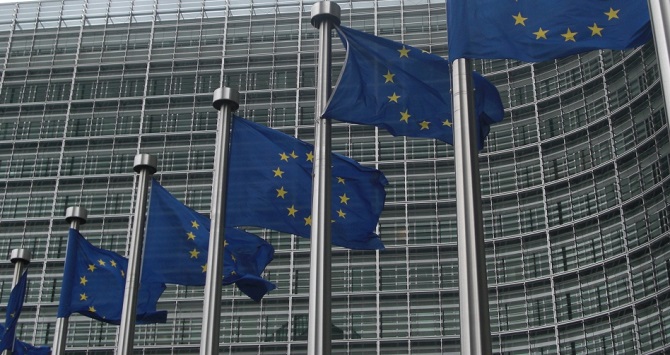 Yesterday, the European Commission (EC) announced its Digital Single Market strategy. LSE’s Sally Broughton Micova looks at the implications of the new strategy for European audiovisual content.
Yesterday, the European Commission (EC) announced its Digital Single Market strategy. LSE’s Sally Broughton Micova looks at the implications of the new strategy for European audiovisual content.
There were no real surprises when European Commission Vice-President Andrus Ansip and Commissioner for Digital Economy and Society Günther H.Oettinger stood on the podium together yesterday to launch the EC’s Digital Single Market (DSM) strategy. Draft versions and the evidence file had been leaked and commentators have remarked on a radical overhaul of copyright in the EU, but there seems to have been a slight retreat on the issue of territoriality and geo-blocking for content between the leaked and final versions of the document. A bit more caution is wise because there remain significant deficiencies in the evidence base on the incentives for European content production, and particularly the potential implications for the EU’s many smaller linguistic markets.
A slight retreat
The draft document circulated by Politico on 20 April claimed that the DSM strategy would mean for citizens and business “unhindered access to diverse content” and a state of “no discrimination or barriers” to goods and services. The words “unhindered” and the promise of “no discrimination” do not appear in the final version.
The final version of the “Better access to digital content” section also seems to focus less on meeting consumer demand than the leaked draft. While copyright reform remains at the core of the Strategy, incentives to create and cultural diversity are mentioned as part of this reform as opposed to the benefits to creators, innovators and consumers referred to in the previous version. It says:
“Europe needs a more harmonised copyright regime which provides incentives to create and invest while allowing transmission and consumption of content across borders, building on our rich cultural diversity.”
The final Strategy still contains a strong commitment to tackling “unjustified” geo-blocking. However, when pressed to explain what would be considered “unjustified” during the press conference, Ansip’s answer associated this with practices related to e-commerce in goods rather than territoriality in copyright, leaving it as a separate discussion. Although he has been reported to be very against geo-blocking of content, during the press conference he stated that he does not want to destroy territoriality in copyright, rather just does not support absolute exclusivity. It may come down to what the “portability of legally acquired content” intended in the strategy will come to mean in practice.
Incentives for content creation
The incentives and capacity for content creation vary significantly across the EU and pose a significant challenge for the many member states that have small populations and unique languages. Without the capacity to invest much in high end drama, sports and entertainment programmes, many broadcasters in these countries rely on the exclusive rights to imported content to fill prime time hours and generate advertising income that can then be used for their own production, including news.
The evidence mentioned in the staff working document released with the DSM strategy on broadcasters’ investment in content is from 2009 and there are not specific figures linking advertising income – which the evidence given from 2013 shows is drastically decreasing for broadcasters – to foreign rights acquired. Evidence on the extent of the importance of acquiring territorially-limited rights for the income of Europe’s broadcaster should be part of any consideration of how better access to digital content is to be achieved.
Multi-territoriality and the EU’s many languages
As nice as it may sound to have a single European market and a level playing field for all actors in the audiovisual media sector, since the 1989 Television Without Frontiers Directive policymakers have always been thwarted in achieving those aims by the EU’s linguistic and cultural diversity. It has been generally the case that before being a hit internationally, most audiovisual content must first be a hit at home. This has traditionally relied on free to air broadcasters that sell content to other broadcasters abroad once the series or programme has generated sufficient interest at home to attest to its potential value for other markets.
Now programmes might be sold to transnational video on demand (VOD) providers, and broadcasters themselves have streaming and on demand services, but home country success remains important. Multi-territorial licences are already available in many cases and since 1989 broadcasters have been able to cross borders within the EU, but as the Association of Commercial Television and others pointed out in their responses to the Commission’s consultation on copyright rules last year, there is a lack of incentives to the provision of audiovisual media services and acquiring licenses in multiple member states because of the language differences.
The country of origin principle as currently applied to cable and satellite transmission might be useful in some form for various online services. Or perhaps efforts could focus on cross-border availability of publicly funded content from public service broadcasters and others. (Of course I would like to watch Poldark on the BBC iPlayer while in Brussels or Rome)
Data on dynamics of the diverse market
The evidence included in the DSM staff working document released yesterday along with the strategy clearly demonstrated Europeans’ desire to access content from their home country while they are in another country. It does not, however, indicate a radical breakdown in the linguistic and cultural fragmentation of the European audiovisual space along national borders.
At some point there should be a complete re-think on the institution of copyright as the basis for incentives for production. For now at least, in the implementation of the DSM strategy the Commission will have to carefully asses how to achieve better access to content for EU citizens from their home countries, without simply opening up conditions for large VOD providers from the US to undermine the income streams and incentives for those investing in European content production.
This post gives the views of the author and does not represent the position of the LSE Media Policy Project blog, nor of the London School of Economics and Political Science.





